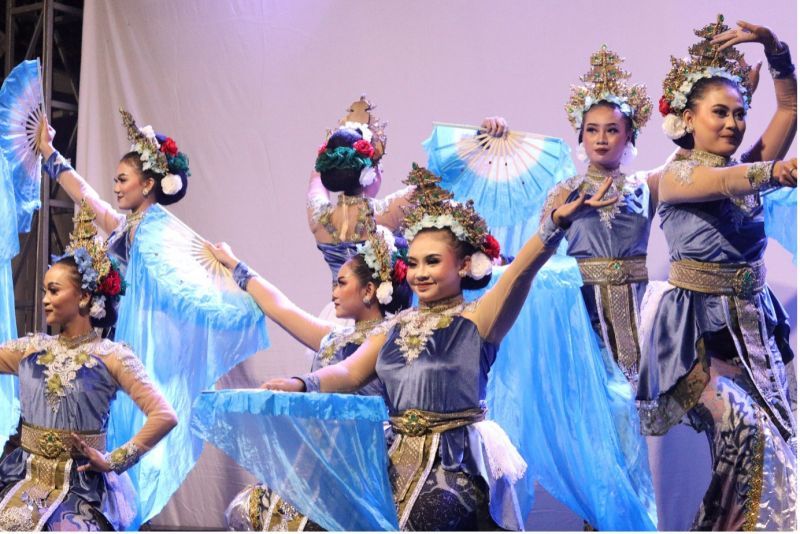
Sapta Pawitra dance performance by Unesa Sendratasik students.
Unesa.ac.id. , SURABAYA–Selotapak Village, Mojokerto Regency is witness to the spirit of artistic innovation from students of the Drama, Dance and Music (Sendratasik) Study Program, Faculty of Languages and Arts (FBS) Surabaya State University (UNESA).
In the Community Service Program (KKN) which lasted for four months, this group of students succeeded in creating a dance work called 'sapta pawitra'.< /p>
This dance was performed on the night of "Harsa Fest" or Selotapak Harmony of Nature and Art, which was the celebration of the closing of the KKN which was held on December 28 2024.
This dance was inspired from the natural beauty and cultural potential of Selotapak Village, which is famous for its seven well-maintained springs and has become an icon of the village. This dance, performed by seven women, tells the story of the harmonious relationship between humans and nature.
The leader of the KKN team, Aura Nur Izzah Humairoh Firdaus, added that the movements in this dance depict the journey of water from springs to various aspects of life, such as agriculture. , fisheries, and the domestic needs of the community.
The selection of the seven female figures as dancers was based on the fact that women are considered a symbol of human life. Apart from that, this dance also includes a moral message about the importance of conserving natural resources for the sake of sustainable life for future generations.
"Initially we planned to create a dance that shows the natural panorama of Selotapak, but after we researched it again, we found seven springs that are still well maintained. And we want there to be art that can show the harmony of nature and humans here," he said.
Aura continued, in the process they also collaborated with village youth, such as during the process of making costumes and music his accompanist. Not without reason, so far the KKN team from the study program which has been established at Unesa since 1986 has also taught village youth to use traditional musical instruments karawitan, dancing and pantomime.
"Our program is about arts empowerment, that's why we provide training in accordance with what we learned on campus. "Even though there are difficulties because we have to regenerate the interest of the young people of Selotapak village in art which had faded," he added.
Meanwhile, the KKN supervisor, Smile Sadhana said that KKN which is a tourism village specialty is very relevant to knowledge that students learn on campus. In this case, he continued, the lecturer only provided direction.
Regarding Intellectual Property Rights (IPR) for the Sapta Pawitra dance work, it will be given in the name of Selotapak Village. The study program, he continued, will always accommodate every student's work as a result of learning that needs to be archived properly.
“Because the students made it for them, it is the village's right to own it. "This dance can also be a sign that Selotapak village is a village that cares about the preservation of arts and culture," he said.
The lecturer who is familiarly called Smile hopes that the works produced by students, both dance, music and village profiles, will be used as a characteristic of local art and culture. Because the study program will always provide full support for the progress of student activities, including in communities they previously did not know.
"Hopefully the various arts that have been taught by students can continue to be preserved by village residents. "Because art is not only a medium of expression, but can also be a means of education, community empowerment and local pride," he concluded.[]
***
Reporter: Fatimah Najmus Shofa ( FBS)
Photo: Unesa KKN Team
Share It On:






